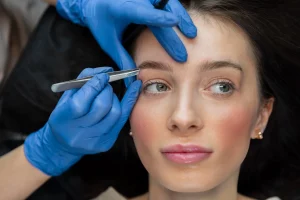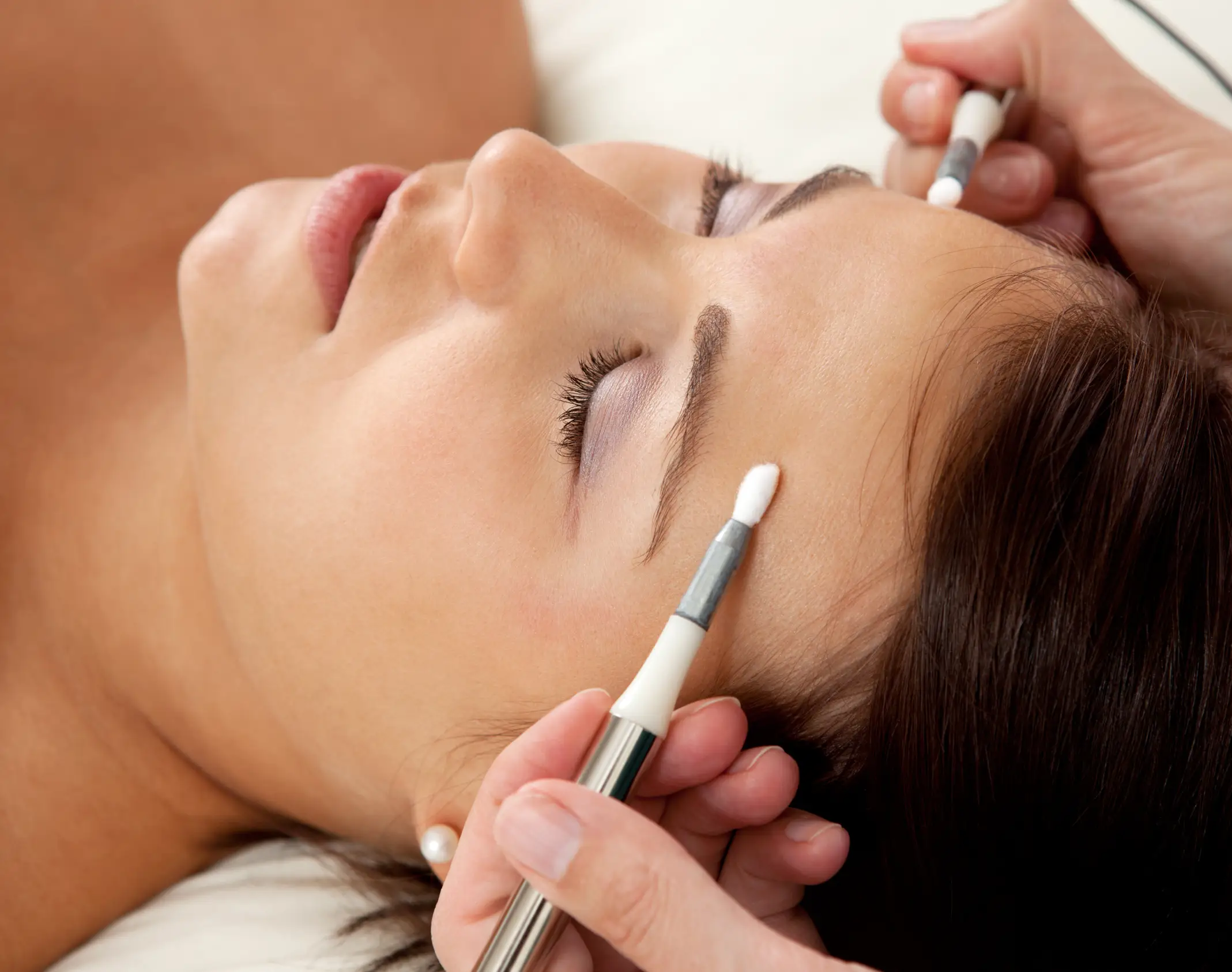Understanding the success in facial anatomy for microbladers. Mastering this art is key to meeting clients’ needs. For athletes seeking flawless brows, merging anatomy with skill is crucial. Delving into facial structures offers precision beyond norms.
Explore these depths to enhance expertise, catering to athletes with bespoke solutions. Uncover insights that transform the quest for perfect brows in sports.
Key Takeaways
- Understanding skin layers and brow bone structure is crucial for precise pigment implantation and natural hair stroke direction in microblading.
- Facial proportions play a significant role in creating balanced and aesthetically pleasing brows, utilizing the golden ratio and assessing facial harmony.
- Key facial features such as eyebrows framing the face, analyzing eyebrow shape in relation to other features, and considering skin type are essential for successful microblading results.
- Leveraging facial anatomy nuances, tailoring techniques to unique facial features, and utilizing anatomical landmarks are essential for achieving exceptional outcomes and client satisfaction in microblading.
Understanding Facial Anatomy
Understanding facial anatomy is fundamental for microbladers seeking to enhance their expertise in creating natural-looking brows. The face is a complex structure comprised of various components that play crucial roles in shaping one’s appearance. Microbladers must have a deep understanding of the skin’s layers, the brow bone structure, and the natural hair growth patterns to achieve optimal results.
The skin consists of three main layers: the epidermis, dermis, and subcutaneous tissue. Microbladers must be aware of these layers to ensure precise pigment implantation and long-lasting results. Additionally, knowledge of the brow bone structure is essential for creating symmetrical and flattering brow shapes that complement the client’s facial features.
Moreover, understanding the natural hair growth patterns on the brows is key to mimicking realistic hair strokes during the microblading process. By following the direction and angle of hair growth, microbladers can create brows that appear natural and full.
Importance of Facial Proportions
The significance of facial proportions in microblading cannot be overstated, as it plays a critical role in achieving harmonious and aesthetically pleasing results. Understanding the importance of facial proportions can elevate the art of microblading to new heights, ensuring the best possible outcomes for clients.
Here are three key points to consider when it comes to the importance of facial proportions in microblading:
- Symmetry: Facial symmetry is crucial in creating balanced and natural-looking brows. Microbladers must carefully assess and measure the client’s facial features to achieve symmetrical results that enhance their overall appearance.
- Golden Ratio: The golden ratio, often referred to as the divine proportion, is a mathematical ratio that is aesthetically pleasing to the human eye. Incorporating this ratio into microblading techniques can help create brows that complement the client’s unique facial structure.
- Facial Harmony: Ensuring that the brows are in harmony with the rest of the face is essential for achieving a cohesive and flattering look. By considering facial proportions, microbladers can customize brow shapes that enhance the client’s natural beauty.
Key Facial Features for Microblading
When considering microblading, a meticulous analysis of key facial features is fundamental for achieving optimal results. The eyebrows play a crucial role in framing the face and enhancing its overall aesthetics. One of the key facial features to consider during microblading is the eyebrow shape. The natural arch, thickness, and length of the eyebrows should be carefully evaluated to create a harmonious and flattering look that complements the individual’s facial structure.
Additionally, the position of the eyebrows in relation to other facial features is essential. The distance between the eyebrows, the eyes, and the nose can significantly impact the overall balance of the face. Microblading techniques can be tailored to adjust the eyebrow position subtly and enhance facial symmetry.
Moreover, the skin type and texture of the client must be taken into account when determining the most suitable microblading approach. Understanding these key facial features and how they interact is crucial for microbladers seeking to provide personalized and effective solutions for their clients.

Enhancing Brow Shape With Anatomy
In the realm of microblading focused on key facial features, the strategic manipulation of brow shape with a deep understanding of facial anatomy is paramount for achieving optimal aesthetic outcomes. Enhancing brow shape with anatomy involves a detailed analysis of the face’s structure and how it influences the overall appearance of the brows.
Here are three key aspects to consider:
- Brow Bone Structure: Understanding the underlying brow bone structure is crucial as it determines the natural arch and shape of the brows. By mapping out this structure accurately, microbladers can create symmetrical and flattering brow shapes that complement the client’s facial features.
- Muscle Movement: Knowledge of facial muscles is essential for predicting how the brows will move and reshape with different facial expressions. By considering muscle dynamics, microbladers can design brows that maintain their shape and definition even when the client smiles or frowns.
- Skin Texture and Elasticity: The texture and elasticity of the skin around the brows play a significant role in the longevity and appearance of microblading. Understanding how these factors interact with the chosen brow shape is essential for achieving natural-looking and long-lasting results.
Utilizing Anatomy for Precision
By leveraging the intricate nuances of facial anatomy, microbladers can achieve unparalleled precision in the art of brow design. Understanding the underlying structures of the face, such as the brow bone’s shape and prominence, the positioning of the eyebrows in relation to the eyes, and the natural arch and symmetry of the brows, is essential for creating flawless results.
The knowledge of anatomy allows microbladers to tailor their techniques to each client’s unique facial features, ensuring that the brows complement and enhance the overall appearance. By analyzing the client’s bone structure, muscle movement, and skin type, microbladers can determine the most suitable brow shape, thickness, and arch that will harmonize with the individual’s face.
Furthermore, by utilizing anatomical landmarks as reference points during the microblading process, practitioners can maintain consistency and accuracy in their work. This precision not only leads to aesthetically pleasing results but also instills confidence in clients seeking brow perfection. Mastering the utilization of facial anatomy in microblading is the key to achieving exceptional outcomes and satisfying the discerning clientele.
Solutions for Brow Perfection
With meticulous attention to detail and expert technique, microbladers can offer tailored solutions to achieve flawless brow perfection for their clients. The pursuit of brow excellence involves understanding the intricacies of facial anatomy, pigment selection, and personalized design to create stunning results.
Here are three key solutions microbladers can implement to ensure brow perfection:
- Customized Design: By analyzing the client’s facial features, skin tone, and desired brow shape, microbladers can create a customized design that enhances the client’s natural beauty. This personalized approach ensures that the final result complements the client’s unique facial structure.
- Color Matching: Selecting the right pigment color is crucial for achieving natural-looking results. Microbladers utilize their expertise in color theory to match the pigment with the client’s hair color and skin tone, creating harmonious and realistic brows.
- Precision Technique: Employing advanced microblading techniques, such as hair-like strokes and proper blade angle, microbladers can create defined and symmetrical brows. Precision in technique is essential for achieving crisp, clean lines and a polished finish that enhances the client’s overall appearance.
Frequently Asked Questions
Can Microblading Be Done on Any Type of Facial Anatomy?
Microblading can be customized to suit various facial anatomies, ensuring optimal results. Professional microbladers assess each client’s unique facial structure and features to create tailored brow designs that enhance natural beauty and symmetry effectively.
How Does Facial Anatomy Play a Role in Determining the Shape of the Brows?
Facial anatomy plays a crucial role in determining the shape of brows as it influences bone structure, muscle placement, and the natural arch of eyebrows. Understanding these anatomical features is essential for creating harmonious and flattering brow shapes.
Are There Specific Facial Features That Are More Challenging to Work With in Microblading?
Certain facial features like deep-set eyes, thin or sparse brows, uneven eyebrows, and scar tissue can pose challenges in microblading. A skilled microblader must assess these unique characteristics to achieve optimal results for their clients.
How Can Understanding Facial Proportions Help in Achieving Better Results in Microblading?
Understanding facial proportions is crucial for precise microblading results. Knowledge of features like eyebrow placement in relation to eyes and face shape aids in creating symmetrical, natural-looking brows. Proportional mapping techniques and anatomical expertise enhance microblading outcomes.
What Are Some Advanced Techniques That Utilize Facial Anatomy for Precision in Microblading?
Utilizing advanced techniques in microblading involves a deep understanding of facial anatomy. Precision is achieved through techniques such as mapping out brow shapes based on bone structure, considering muscle movement for natural results, and employing proper pigment placement for lasting effects.
Conclusion
In conclusion, a thorough understanding of facial anatomy is essential for microbladers seeking to achieve optimal results in brow aesthetics. By delving into the intricacies of facial structures, professionals can tailor their techniques to enhance the natural beauty of their clients. Through precise knowledge of facial proportions, key features, and muscle movements, microbladers can offer tailored solutions for sportsmen seeking brow excellence. Mastery of facial anatomy is the cornerstone for delivering impeccable results in the art of microblading.
You May Also Like:

